Listening
Now it’s time for some music. Everyone’s present: iUSB3.0 plugged into computer with the cable from the set with a peculiar plug and supplemented with double Gemini, at the other end of which sits iDSD. All set, now put on your headphones and listen.
Grado SR60
Not long ago, the mobile Astell & Kern AK380 has been reviewed and the Grado did excellent, and because they don’t cost much, they fit to the ifi devices very well.
To the point. This time the sound was even more spectacular, but its style turned out to be quite different. The eight paths of improvement really improve many things and the sound gains strength, expressiveness, is full of detail and powerful. It’s also become more direct, the artists seem much closer and their expression is significantly stronger. It’s like getting headphones from a higher price segment, which can analyse music much deeper and reproduce it better, and adding to it a better amp that has more power and is faster. It immediately became clear that this show has climbed to a higher level – and it wasn’t just like: “Well, OK, I guess it is better…” It was a real explosion of improvement which can be described with one song. Look up Led Zeppelin’s Immigrant Song on You Tube. I’ve mentioned this one before, but it is very useful, so it’s good to have it. Take that song and listen to it with your headphones. If your equipment is of exceptional quality (it doesn’t mean it has to be expensive), then this rock song must bring to your mind a cloud bustling with energy. It will literally pulse and throw sound impulses at the listener (especially the bass guitar and drums) and put a pressure at them, which is completely different from the raw decibels of loud noise. If you can feel this power then you’re there. And if you can hear only loud music, having nothing to do with physical impenetrability or the power to throw music at you, then you are yet to see the audiophile paradise. This song lacked this cloud and power with Grado SR60 and AK380 (without a dedicated amp), and with iUSB and iDSD it was fully there. Apart form that, the listening session on the whole was far from relaxing. It was aggressive, super clear and exceptionally energetic. As if it didn’t come from those usually calm and musical SR60s, but rather some highly detailed Ultrasone Edition12. Without their amazing holography, but with such a style.
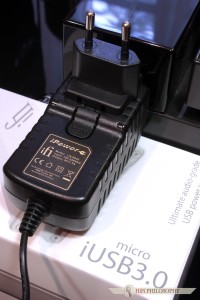
The regaining process starts from the very beginning, that is from a special power supply which filters out ground noise.
AKG K712 (Stefan Audio Art cable)
Now it’s time for a comparison. Because the AKG has been used while testing the iDSD playing through the earlier iUSBPower, also with Gemini cable, any potential differences will only occur between the amp-transducer and computer, as now we only replaced iUSBPower with iUSB3.0. So we have the same thing but with better quality and a different name. I just want to add that iUSB only had about a week to warm up and was brand new when I got it. But time was pressing, because other reviewers also wanted to get it and were rushing me. It’s no surprise that everyone wants to see this new iUSB and test it themselves.
The professional AKG have preserved the overall style of energetic attack shown by Grado, but the foreground was pushed further back, and they surprised me with a much bigger scene. The sound wasn’t either lighter or darker, but filled a huge, wide-spreading scene. Theoretically, it shouldn’t be a surprise, as they are known for big scenes, but it is their unprofessional predecessors, the AKG K701 that are characterized by huge scenes, and not the K712 PRO. Apart from that, comparing AK380 and Grado, the latter placed the scene much further but the impression of its magnitude was similar in both cases. But here AKGs caught the wind in the sails and could navigate towards much greater oceans. And the journey was perfect, the sound had enough air, but also didn’t lack density. However, what dominated was energetic stroke, rough depth of textures and super clear reproduction. No leniency, so again – like with Grado – the normally lenient headphones began to delve deep into music. They didn’t overdo it, but all the time they were on the line and it was a far cry from music in its relaxing version. Just like with Grado, the bass was very good, there was no need to enhance it with X-Bass processor, and the huge scene didn’t require 3D editing. Although after applying it, the scene grew even bigger and the sound became lighter, but not too light.
Sony MDR-Z1000
This model also did great while testing AK380, and now it has confirmed that it has many talents. These headphones had even more energy than the previous ones and the bass was even stronger, and they were faster. In addition – and what’s more important – they were more musical, which is quite surprising, especially taking into consideration that Grado are very musical, and it shows that this set is very well matched. Apart from that, the sound was very spacious, but there was no impression of the scene magnitude like in the case of AKG. But neither was there any impression of confinement or overlapping. The space had its size and order, and the bustling energy didn’t let you focus on anything else.
Let me clarify one more time – it wasn’t a show off of musicality with rough explicitness imposing on you, it was smooth and wavy music, but from time to time Grado and AKG proved better. They were more rough than AK380, but also stronger and more aggressive. The music was full of good energy and the expression of brass band was directly referring to the real thing. Perhaps treble somewhat lacked dimensionality, but the dynamics and overall form was as real as you can get. If this iUSB3.0 will warm up the right way, then it will achieve absolute perfection.
AudioQuest NightHawk
Significantly more expensive NightHawk with newer design have proven that they can do even better. There was even more air flowing and when it comes to musicality, this model outperformed all the previous ones. They still haven’t fully warmed up and slowly, after a reverb jump, they regain their proper musicality. Nevertheless, they will probably preserve their reverb and large scene character. They are definitely the most explicit among the tested models and their musicality makes them sonically universal, so they feel at home with any repertoire, and you can forget that you are wearing them. And I don’t mean comfort, although they are indeed very comfy, I mean how they play – as if there were no intermediate devices. It is achieved with their super transparency, you can literally see the air flowing while you listen, and it is supplemented with the smoothest phrases among all the compared sets. And this too wasn’t relaxing, it was pure realism, at times even tangible. Nevertheless the music flow and waves were much better. What was also noticeable, like in the case of all the previous headphones, was a slight tensing of sound, but only slight, constituting a background for this restless energy. It was accompanied by proximity of the performers, who seemed huge, and the vibrating air had a metaphysical taste. And again, as always when music is exceptionally good, you can feel undeniable presence of some being other than yourself, the accompanying trebles are calmer and the dynamics less imposing, more like staying in the background.
Grado GS1000e
Still warming up Grado, just like AudioQuest, have shown analogical style, but with scene magnitude like with AKG. I’m not saying that NightHawk have a small scene, because now, after good warming up it is big, however its magnitude is not so obvious like is the case with Grado. At the same time, they have super direct character, which makes the AKG, which were praised a moment ago, seem like they were behind a veil. They also have great energy and dynamics – the aspects that are clearly favoured by iUSB itself. Analogically to AudioQuest, this model is exceptionally clear, with air constantly flowing, and going into the abyssal depth of scene is a source of immense pleasure. The space, clearly coming to life, seems to have a life of its own, trebles are noticeably more emphasized, which additionally expands the space and gives more pronounced textures. Roughness, however, was rather mild, so stylistically similar to the one in NightHawk. But it’s not the reason to think that the headphones lack transparency or clarity, because these qualities are of the highest class.
I can’t say that the headphones in this ifi duet are less musical or that, just like AKG and little Grado, they played technical sound, because all the energy and dynamics gave them a totally non-technical character. Nevertheless the big Grado and NightHawk were in this respect much better. Undoubtedly, both more expensive models are better at separating the sources and reproducing the musical layers and I can’t say a bad word about the cooperation of these layers. At the same time, their advantage in reproducing the dimensionality of trebles was noticeable, and this is the key thing which makes them more musical. But what is the best is their transparency and the energy coming at you from every corner. It was neither a style closed in small space of accumulated energy nor a huge space of calm scenery. The space was huge, but the music creating it was dynamic and full of energy. Add to this lots of air in all sounds and superb transparency of the animated space – and you have all the qualities that make a spectacular composition which rarely can be found together in one place. And surely not at this price level.









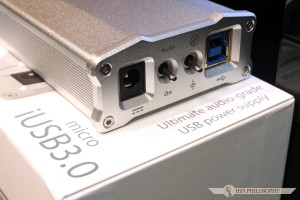
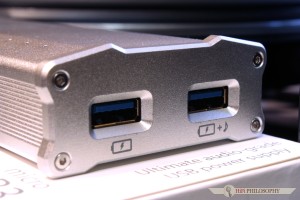

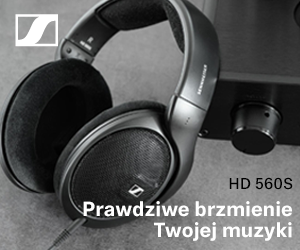

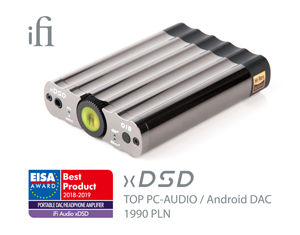


Ponieważ nie ma jeszcze forum, pozwolę sobie w tym miejscu napisać coś całkiem nie na temat, ale za to o najbardziej bieżącej sprawie muzycznej. Posłuchałem przez odrobinkę , dosłownie po kilkanaście sekund, dziesiątki finalistów Konkursu Chopinowskiego. Moim zdaniem najlepiej prezentują się Dymitr Szyszkin (różnie jego nazwisko piszą), Georgijs Osokins i Eric Lu.
My z żoną rano słuchaliśmy za to Anne-Sophie Mutter z sonatami Mendelssohna w TVP Kultura (na marginesie czasem dobrze mieć podłączony DAC do TV) na wieczór za to już zabrakło sposobności czasowej.